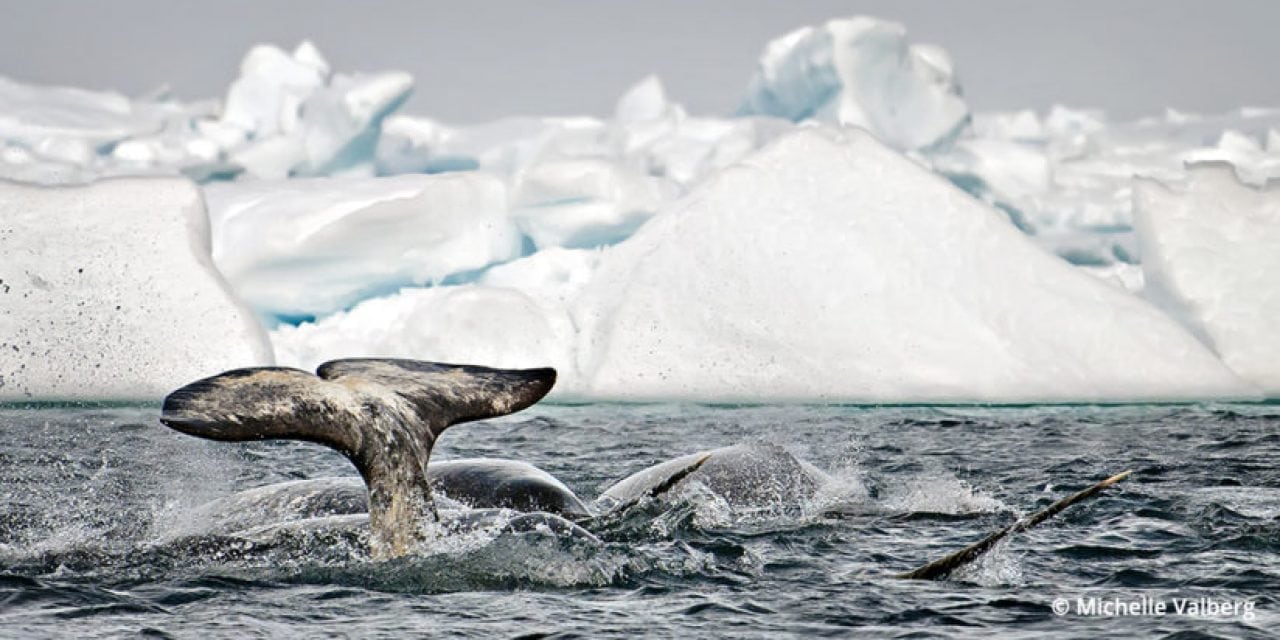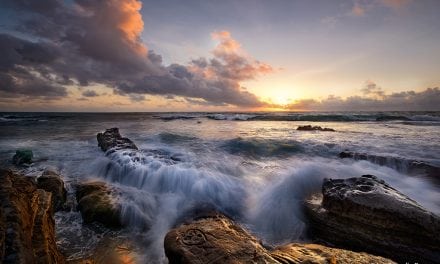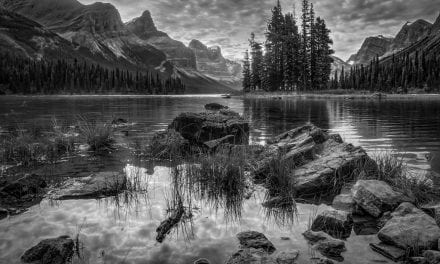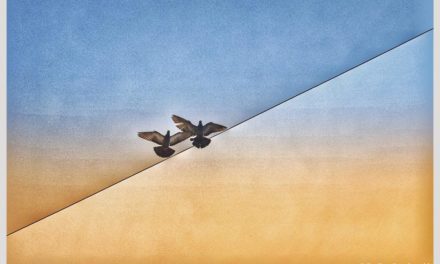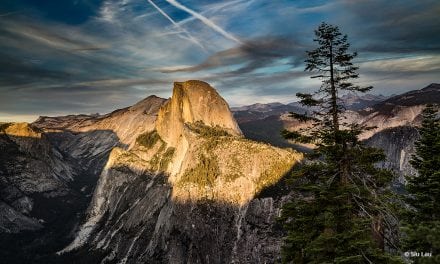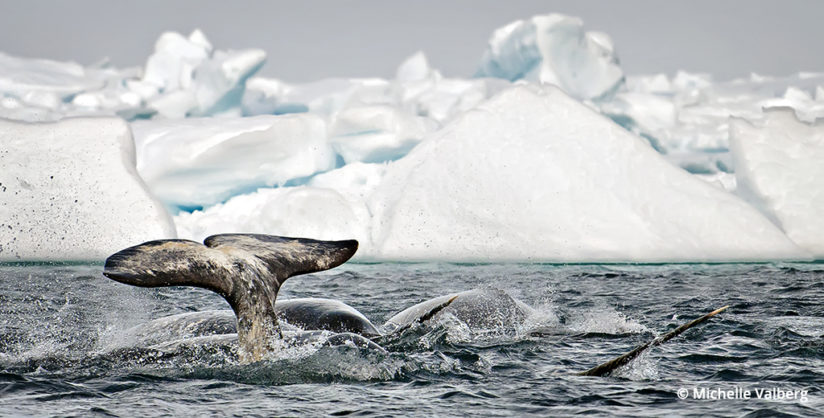
In medieval cartography, Ultima Thule was a mysterious place beyond the borders of the known world. While modern mapping techniques have given us a cerebral knowledge of these once “off the map” regions, vast areas of the high Arctic have seldom, if ever, felt the indentation of a human footprint. This is the Canadian Arctic, the photographic playground of Ottawa-based Michelle Valberg.
While familiar territory to the indigenous Inuit, what is now the Canadian high Arctic became known to the “West” only in the mid-19th century. But it often came at a heavy price. In 1845, John Franklin set sail from England with two ships, HMS Erebus and HMS Terror, on his fourth and final effort to locate a Northwest Passage across the top of North America. The ships and crews vanished until September 2014, when an expedition led by Parks Canada discovered the wreck of HMS Erebus south of King William Island in Nunavut, and two years later HMS Terror further north in Terror Bay. The two ships had become icebound in Victoria Strait in September 1846. Captain Franklin and his expedition team perished within two years due to the unforgiving Arctic conditions.
Unlike the ill-fated Franklin expedition, Valberg returns home with images that portray the creatures that have successfully adapted to life on the top of world. The Canadian Geographic Photographer-in-Residence and Canadian Nikon Ambassador’s books include Arctic Kaleidoscope: The People, Wildlife and Ever-Changing Landscapes and a book for children, Ben & Nuki Discover Polar Bears.
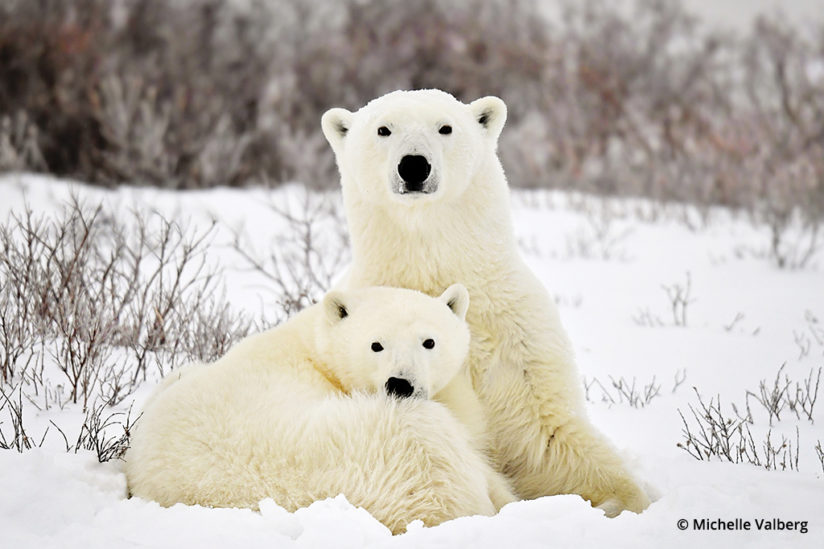
Outdoor Photographer: What is it about the far north that fascinates you?
Michelle Valberg: My first trip to the Arctic was in 2008. I went to the Pond Inlet floe-edge, where the land-fast ice meets the open water during the spring ice break-up, and camped on the ice for seven nights. This is where polar wildlife congregates in springtime, and this is where I saw my first polar bear. It changed the direction of my career. Right then it became my mission and passion to bring the north to the south to show the world, especially my fellow Canadians, what we have in Canada’s Arctic. My continuing goal is to show the beauty and wonder of what we have in the Arctic and what we have to lose.
In addition to the rare wildlife and the vast and beautiful landscapes of the north, I was left in awe by the Inuit people and their culture. I have made more than 50 trips to the high and sub-arctic regions and have traveled to Nunavut, Nunavik, Nunatsiavut, the Northwest Territories, Yukon, as well as Iceland and Greenland. This includes photographing polar bears in Wapusk National Park, Churchill and Arviat.
OP: In addition to the polar bear, what other wildlife do you encounter in the Arctic?
MV: Caribou, muskox and grizzly bears, hares, foxes. Bowhead, narwhal, beluga, humpback and orca whales. Birds including snowy owls, king eiders, arctic loons, black-legged kittiwakes and gyrfalcons. Bearded, ringed and harp seals. Walrus. Small critters like the Arctic ground squirrel and short-tailed weasel. I watch the animals, anticipate their behavior, exercise patience, and I shoot a lot of frames in any given situation. Whenever possible, I am out in the magic hours of the day. My preference is the early-morning hours.

OP: At first or even second sight, vast areas of the terra firma of the polar region seem uninhabitable.
MV: Even though the Arctic seems desolate, there is life everywhere. Most of the land-based animals are quite elusive. The landscapes are extraordinary and are different from west to east. Flat to mountainous, from trees that grow low to the ground to massive icebergs in the eastern Arctic. The landscapes are diverse, from the extremely flat vistas on the west side of Nunavut to towering mountains on the east side of Baffin Island. Icebergs are works of art, and with the beautiful light you find in the Arctic, you can photograph one iceberg a thousand different ways. The texture of the rocks, the colors of the flora and the sea ice blues are mesmerizing.
OP: What are some of the challenges you encounter working in the high Arctic?
MV: It isn’t easy to travel to and photograph in Canada’s high Arctic. From November to February, it’s dark 24 hours a day. There are no roads that connect the few communities that are there. You can fly in to them or transit by water in the few months the waterways are open. But airfare is expensive, and you need to have a guide to go out on the land.
OP: What photographic equipment do you bring with you when you head north of the Arctic Circle?
MV: I’m working with the Nikon D5, D850 and D500 camera bodies with 14-24mm, 24-70mm, 70-200mm, 200-500mm, 600mm and 800mm lenses. I also use Nikon KeyMission 360 and 170 cameras. A dry bag and LensCoats are vital pieces of equipment in the Arctic region. You need to protect your equipment against the harsh elements, especially the salt water. My world has changed now with the D850. I shot at 3200 ISO with great results. At 45-plus megapixels, with this ISO capability, it changes everything.
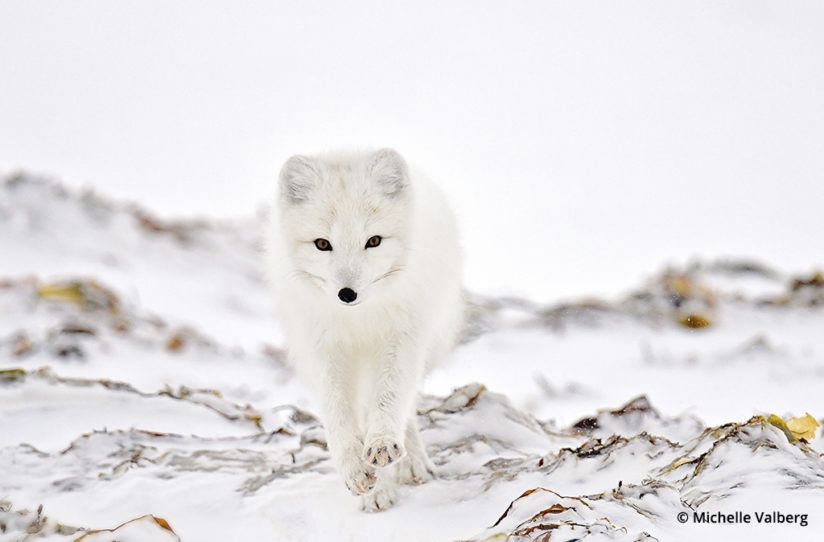
I take two or three cameras with me at all times. I also like to pack the Nikon AW1, a shockproof underwater camera, for possible wet situations, and the Key Mission 170 for super wide-angle images and video. For lenses, I use the 14-24mm for landscapes, the 24-70mm for community and portraits, the 70-200mm for on-land and in the communities, the 200-500mm and the 800mm for wildlife. The D500 with its 1.5x crop-sensor extends my reach to 1200mm, which can make a big difference with the more skittish wildlife such as Arctic hare, birds, ground squirrels, weasels and Arctic foxes.
Occasionally, I will use a neutral density filter to reduce the amount of light passing through the camera lens if I want to create motion with a slower shutter speed or to get less depth of field. If I am going underwater, I use the Aquatica system.
OP: How do your photo techniques vary from one species to another?
MV: Most of the time, the situation I’m in will dictate the techniques I’ll use. If time allows, I will watch, anticipate animal behavior and shoot in continuous shooting mode. Creating emotion with wildlife photography is key to capturing your audience. If I’m on land and have stability and control, I will use my Vanguard tripod with a Wimberley head with a longer prime lens. If I’m on a moving vessel like a Zodiac or kayak or in heavy snow conditions, I will use a lens I can hand-hold for more versatility, such as the NIKKOR 200-500mm. I like to be able to move quickly and efficiently to adapt to my subject and conditions. Fast shutter speeds are my priority with wildlife photography, and I will increase my ISO to levels that will allow me to have a much faster shutter speed and relatively good apertures—for me, ƒ/8 is ideal for bears. I like to have their nose, eyes, ears and behinds in focus whenever possible.
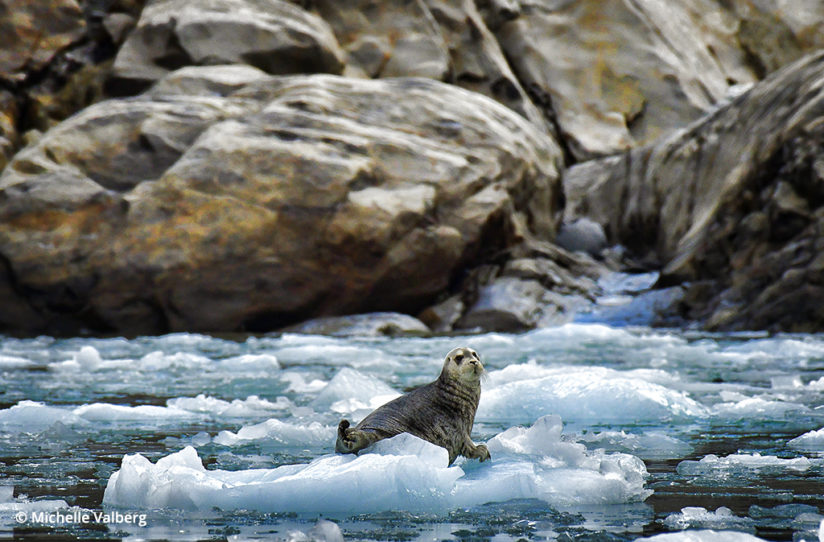
If I’m on land, I’m using a longer prime lens like a 600mm or 800mm for bears, especially when you want more distance between you and these larger creatures. If I am in a Zodiac, I will use the 200-500mm and not dip below 1/1000 sec. to avoid camera shake.
OP: What is the closest encounter you’ve ever had with one of your bigger subjects?
MV: On a trip to the polar bear cabins between Churchill and Arviat, our Twin Otter landed on the tundra. Just before landing, we had flown over the beach close to the remote cabins situated on the Hudson Bay coast. We saw a polar bear. We were excited. Once we landed, we started to unpack our essentials when my friend spotted the bear watching us. He was behind a snowdrift. Our guides quickly got their guns. Within minutes, the curious bear moved closer and closer. I was photographing every move the bear made, and before I knew it, I was 10 feet behind my guide and the polar bear was only 20 feet away from him. There was nothing I could do at that point so I continued to take photos.
My Inuit guide stood strongly and showed no sign of backing down. He spoke Inuktitut to the bear, telling it we meant no harm and to go away. Then the bear sat down, moved its head from side to side, and put one paw forward. It was going to charge. The bear would have been on us within seconds. Jason, one of our guides, fired a ground shot from his rifle to scare the bear away. It left, but reluctantly. We were relieved. No harm had come to us or to the bear. The last thing you want to do is harm a bear in its own environment.
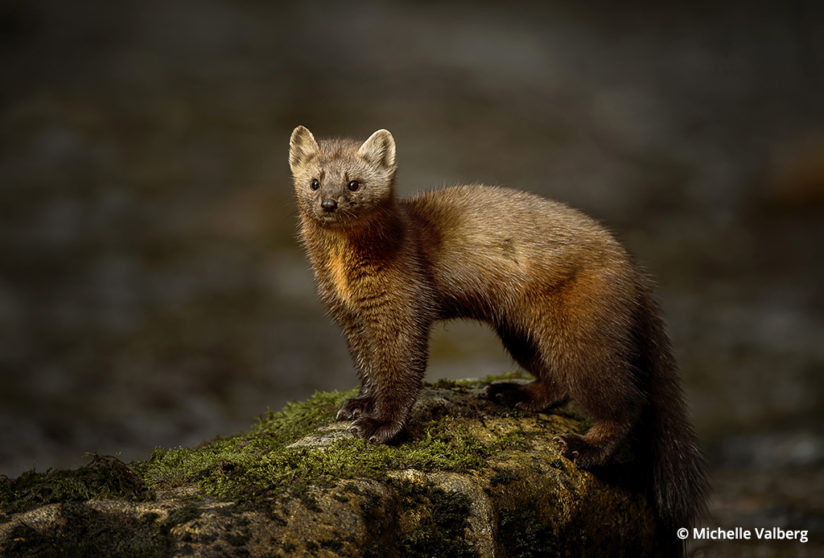
It is a place that is so vast, demanding and diverse. You have to be well prepared with your clothing and gear. You can be in severe wet and cold and without the right gear, your assignment can fail. It is critical to be warm. Heat 3 gloves are part of my packing list for assignments that take me into the Arctic.
OP: The high Arctic is such a raw and pristine region where you come face to face with the elements.
MV: Senses are acute in the Arctic. The wonderful smell of the Labrador tea as you walk on the land or the awful stench of a large herd of walrus, there are smells you can only find in the Arctic. The views are extraordinary, and the quietness is deafening.
OP: What are some of the assignments that have brought you to the Arctic?
MV: I work as a resource photographer for Adventure Canada aboard the Ocean Endeavour as well as for Frontiers North Adventures and Abercrombie & Kent. I also shoot for stock, exhibitions, Instagram take-overs and books. I just took part in Canada C3—coast to coast to coast—a project for Canada’s 150th anniversary of Confederation in 2017. The centerpiece was a 150-day sailing journey from Toronto to Victoria via the Northwest Passage that is connecting Canadians and inspiring a deeper understanding of our land and people.
OP: You’re also helping in this effort with your not-for-profit organization, Project North.
MV: Project North is dedicated to improving the lives of Inuit families, especially children, living in remote Canadian Arctic communities through sport and education. The culture and traditions of the people who have lived in the Arctic for thousands of years touch my soul. I co-founded Project North with my friend Joan Weinman in 2009. Initially it was going to be a one-time drive delivering used hockey gear to four Nunavut communities with help from Adventure Canada and First Air. It’s become much more than that over the years. With the help of highly dedicated volunteers and supportive sponsors, we have reached $1 million of hockey and sporting equipment deliveries to over 28 communities in Nunavut, Nunavik, Nunatsiavut and Northwest Territories. We have also brought up the Stanley Cup with NHL alumni to numerous communities three years in a row.

We witness the happiness and excitement from community to community. Not only does hockey equipment promote physical activity, it fosters pride within the communities and has resulted in the development of community hockey leagues and brought families together in new and profound ways. We all know that sport has a positive impact on children, and by donating sporting equipment, we can share our favorite games with kids in remote northern communities. It has reinforced my belief that with hard work and commitment, you can make anything happen.
See more of Michelle Valberg’s work at michellevalberg.com and on Instagram @michellevalbergphotography.
YOU MIGHT ALSO LIKE
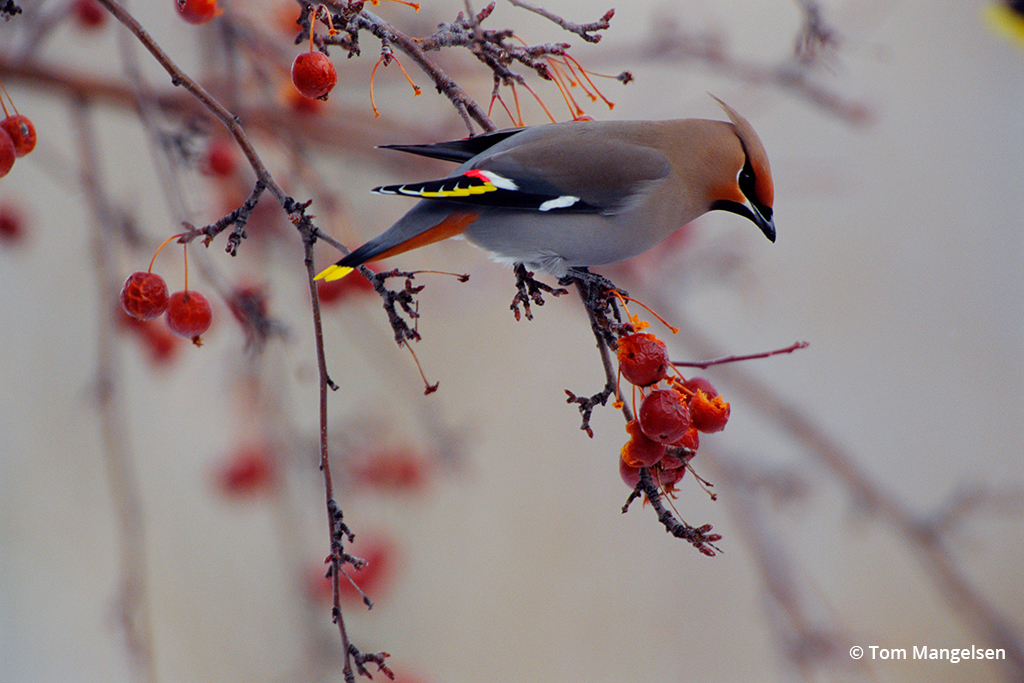
Winter Narratives
Tom Mangelsen’s approach to wildlife photography leads viewers to deeper stories. Read now.
The post Call Of The Wild appeared first on Outdoor Photographer.

